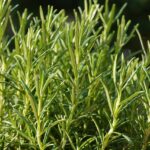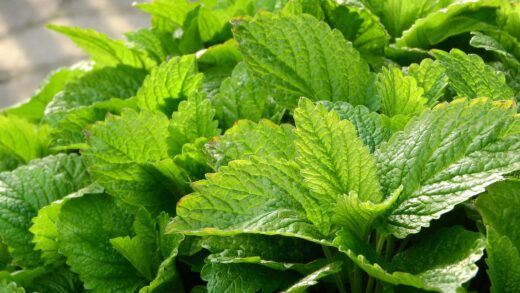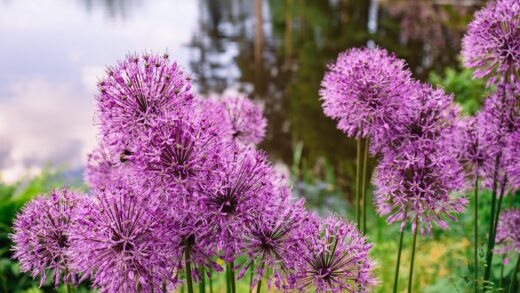Overwintering the Delta maidenhair fern

Successfully overwintering the Delta maidenhair fern indoors requires a thoughtful adjustment of care practices to accommodate the changing environmental conditions of the season. As daylight hours shorten and indoor heating systems are turned on, the two most critical factors for the fern’s survival—light and humidity—are significantly altered. The plant will naturally enter a period of slower growth or semi-dormancy, and its needs for water and nutrients will decrease accordingly. Recognizing this seasonal shift and adapting your routine is essential to prevent stress and ensure the plant remains healthy until spring arrives.
The primary challenge during winter is combating the dry air created by central heating. This arid environment is the antithesis of the humid conditions the maidenhair fern craves and is the most common cause of winter decline. Crispy, brown fronds are a frequent sight on these ferns during the winter months if supplemental humidity is not provided. Therefore, a key focus of overwintering care is to create a humid microclimate around the plant to buffer it from the harsh, dry air of the home.
Light levels also decrease significantly in winter, and while the maidenhair fern prefers indirect light, it still needs sufficient brightness to maintain its health. A location that was perfect during the summer may become too dark in the winter. It is often necessary to move the plant to a brighter location, such as closer to a south-facing window (but still shielded from direct sun), to compensate for the weaker, shorter days. Careful observation of the plant’s condition will guide the need for relocation.
It is normal for the fern to experience some dieback of older fronds during the winter. This is part of its natural cycle, and as long as the plant is otherwise healthy and still has a core of green foliage, it should not be a cause for alarm. The goal of overwintering is not necessarily to encourage vigorous new growth, but rather to maintain the plant’s health and stability through the challenging winter months, setting it up for a robust burst of growth when spring returns.
Adjusting to winter light conditions
As the seasons change and autumn transitions to winter, the intensity and duration of natural daylight decrease significantly. This reduction in light has a direct impact on the health and growth of the Delta maidenhair fern. A location that provided ideal bright, indirect light during the summer months may become too shady and dim during the winter. Insufficient light can lead to weak, leggy growth, a loss of vibrancy in the foliage, and a general decline in the plant’s vigor, making it more susceptible to pests and diseases.
More articles on this topic
To counteract the lower light levels, it may be necessary to move your fern to a brighter spot for the winter. The best winter location is often an east-facing window, where it can receive some gentle morning sun, or a spot a few feet away from a south-facing window, where it can benefit from the bright ambient light without being exposed to harsh direct rays. A north-facing window, which is often ideal in summer, might not provide enough light during the darkest winter months.
It is important to keep the windows clean to maximize the amount of light that can pass through. A layer of dust and grime on the glass can significantly reduce light transmission. Additionally, be mindful of outdoor obstructions like deciduous trees that, while providing shade in the summer, allow more light through once they have lost their leaves in the winter. Observe the light patterns in your home as they change with the season and adjust the plant’s position accordingly.
If you cannot provide enough natural light, especially in regions with very dark winters, supplementing with artificial lighting can be a great solution. A simple full-spectrum LED grow light can provide the necessary light waves for the fern to continue photosynthesizing and maintain its health. The light should be positioned above the plant and run for about 12-14 hours a day to mimic a natural light cycle. This can make a dramatic difference in the fern’s ability to thrive through the winter.
Managing humidity in a heated home
The single greatest challenge in overwintering a Delta maidenhair fern is maintaining adequate humidity. Central heating systems, while keeping our homes comfortable, create an extremely dry atmospheric environment. This dry air causes moisture to be rapidly pulled from the fern’s delicate fronds, leading to the dreaded crispy, brown edges and, in severe cases, the death of the entire plant. Actively managing and increasing the humidity around your fern is not just beneficial; it is absolutely essential for its winter survival.
More articles on this topic
One of the most effective methods for creating a humid microclimate is to use a room humidifier. Placing a humidifier near your fern and other tropical plants can maintain the ambient moisture at the 50-60% level that these plants need to thrive. This provides a consistent and reliable solution that requires minimal daily effort. Grouping plants together also helps to collectively raise the humidity in their immediate vicinity as they release water vapor through transpiration.
A simpler, passive method is to place the fern on a pebble tray. This involves setting the pot on a shallow tray filled with pebbles or gravel and water. The bottom of the pot should sit on the pebbles, above the water line, to prevent the soil from becoming waterlogged. As the water in the tray evaporates, it increases the humidity directly around the plant. The water in the tray will need to be topped up every few days as it evaporates.
While regular misting can provide a temporary boost in humidity, its effects are very short-lived, often lasting only a few minutes. To be effective, misting would need to be done multiple times throughout the day, which is often impractical. Furthermore, leaving the fronds constantly wet, especially in cooler winter conditions with poor air circulation, can sometimes encourage fungal issues. Therefore, relying on methods like humidifiers or pebble trays is a more sustainable and effective long-term strategy.
Modifying watering and feeding routines
As the growth of the Delta maidenhair fern slows down in the low-light conditions of winter, its need for water will naturally decrease. It is crucial to adjust your watering routine accordingly to prevent overwatering, which is a significant risk during this period. The soil will take longer to dry out than it did in the summer, so you must rely on checking the soil moisture rather than sticking to a fixed schedule. Continue to water only when the top inch of soil begins to feel dry to the touch.
When you do water, continue to do so thoroughly, allowing the water to flush through the pot, but be even more vigilant about ensuring the plant does not sit in a saucer of excess water. The combination of cooler temperatures and waterlogged soil is a recipe for root rot. If you move your plant to a cooler location for the winter, its water requirements will be reduced even further. Always err on the side of caution; it is slightly better for the soil to be a little too dry than constantly too wet during dormancy.
Fertilization should be completely stopped during the overwintering period. The fern is not in an active growth phase and cannot utilize the extra nutrients. Fertilizing a dormant or semi-dormant plant can lead to a buildup of mineral salts in the soil, which can damage the sensitive root system. Cease all feeding from late autumn through the winter months. You can resume a diluted feeding schedule in early spring when you begin to see signs of new growth.
Pay attention to the temperature of the water you use. In winter, tap water can be quite cold, and using it directly on your fern can shock its roots. It is always best to use room-temperature water. A simple way to ensure this is to keep a watering can filled, allowing the water to naturally come to the ambient temperature of the room before you use it. This small detail can help reduce stress on the plant during the challenging winter season.
Dealing with winter dieback
It is quite common and perfectly natural for a Delta maidenhair fern to experience some dieback during the winter. As the plant slows its growth, it may shed some of its older, less efficient fronds to conserve energy. You may notice some of the outer or lower fronds turning yellow or brown and drying up. As long as the core of the plant and its rhizomes remain healthy and there is still a good amount of green foliage, this is not a cause for panic.
Regularly prune away any fronds that have turned completely brown and crispy. Use a small, sharp pair of scissors and cut the dead frond off at its base, near the soil line. This not only improves the plant’s appearance but also helps to increase air circulation around the base of the plant, which can help prevent fungal issues. Removing the dead material prevents it from decaying on the soil surface, which could otherwise harbor pests or diseases.
Do not be tempted to perform a hard pruning or cut back the entire plant in the middle of winter, even if it looks a bit sparse. The existing green fronds, even if they are not in perfect condition, are still photosynthesizing and providing energy for the plant and its root system. A major pruning should wait until early spring, when the plant is ready to push out a new flush of vigorous growth. A winter pruning can add unnecessary stress to an already challenged plant.
Patience is key during this period. The goal is maintenance, not active growth. Resist the urge to overcompensate for a sparse appearance with more water or fertilizer, as this will likely do more harm than good. Trust in the plant’s natural cycle. By providing the best possible conditions of light and humidity and adjusting your care routine, you are giving your fern the support it needs to rest and successfully make it through the winter, ready to thrive again in the spring.


















